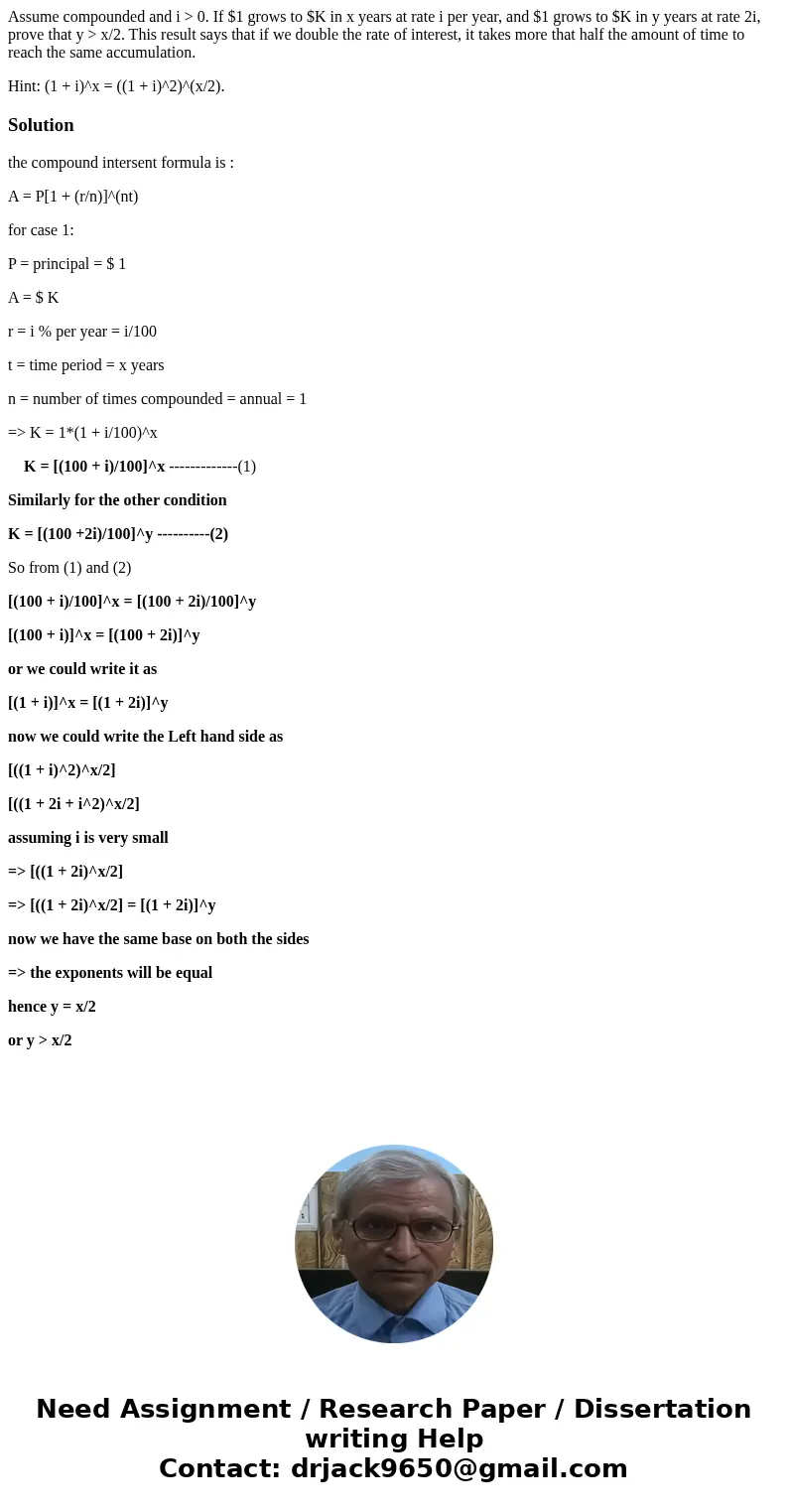Assume compounded and i 0 If 1 grows to K in x years at rat
Assume compounded and i > 0. If $1 grows to $K in x years at rate i per year, and $1 grows to $K in y years at rate 2i, prove that y > x/2. This result says that if we double the rate of interest, it takes more that half the amount of time to reach the same accumulation.
Hint: (1 + i)^x = ((1 + i)^2)^(x/2).
Solution
the compound intersent formula is :
A = P[1 + (r/n)]^(nt)
for case 1:
P = principal = $ 1
A = $ K
r = i % per year = i/100
t = time period = x years
n = number of times compounded = annual = 1
=> K = 1*(1 + i/100)^x
K = [(100 + i)/100]^x -------------(1)
Similarly for the other condition
K = [(100 +2i)/100]^y ----------(2)
So from (1) and (2)
[(100 + i)/100]^x = [(100 + 2i)/100]^y
[(100 + i)]^x = [(100 + 2i)]^y
or we could write it as
[(1 + i)]^x = [(1 + 2i)]^y
now we could write the Left hand side as
[((1 + i)^2)^x/2]
[((1 + 2i + i^2)^x/2]
assuming i is very small
=> [((1 + 2i)^x/2]
=> [((1 + 2i)^x/2] = [(1 + 2i)]^y
now we have the same base on both the sides
=> the exponents will be equal
hence y = x/2
or y > x/2

 Homework Sourse
Homework Sourse